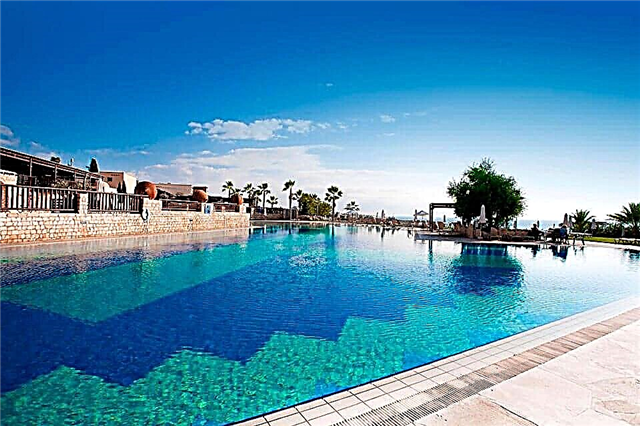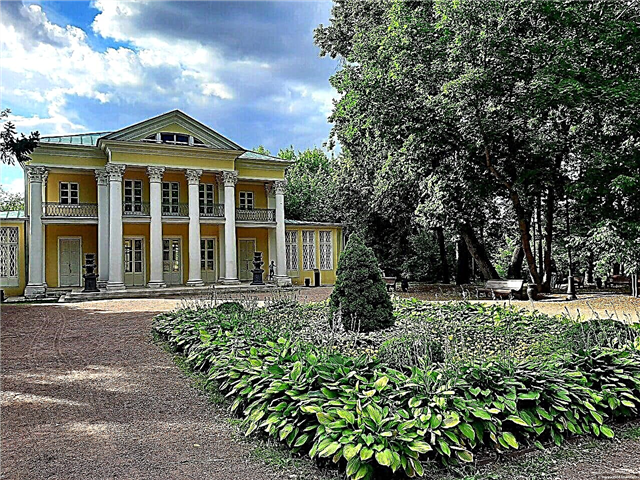There are only three monuments inside the Kremlin walls, but tens of thousands of tourists come to see them. The Tsar Cannon and the Tsar Bell have a long history and are considered one of the symbols of the Russian state. The results of the work of talented craftsmen are recognized as outstanding monuments of Russian foundry art. The memorial at the site of the death of Prince Sergei Alexandrovich was erected at the beginning of the last century. It was destroyed during the years of Soviet power and was restored quite recently.
Tsar Cannon

A huge weapon is installed on the spacious Ivanovskaya Square, near which there are always many travelers. No wonder! The dimensions of the gun are amazing. It has a length of 5.34 m, a barrel diameter of 1.2 m, a caliber of 890 mm and weighs 2,400 pounds, which is almost 40 tons!
In the Middle Ages, the center for the production of artillery pieces and bells was Cannon Yard, which was located on the site of modern Pushechnaya Street and Lubyanskaya Square. In this part of Moscow there were several smelting furnaces, forges and foundries, where the best foundry workers, embossers and blacksmiths in Russia worked.
The huge cannon was cast by Andrey Chokhov in 1586. The renowned master has worked at the Cannon Yard for over 40 years. He made many heavy artillery pieces and trained talented students who later became famous cannon and bell craftsmen.
It is believed that the cannon on the Ivanovskaya Square of the Moscow Kremlin never fired. However, gunsmiths dispute this popular belief. The bronze bombard bears the personal seal of the master, and it was supposed to put it only after a test shot. On the other hand, bronze tides were preserved in the barrel chamber. If the Tsar Cannon had fired at least once, they would have left at the moment the ball passed. In addition, the gun does not have an ignition hole, so it is simply impossible to fire a shot from it.
A natural question arises - what were the giant bombards intended for? Massive guns were used for shelling the fortress walls, that is, for the siege. The cannonballs that lie near the cannon are decorative - they are empty inside. If the cores were all-metal, they would weigh more than a ton, and special mechanisms would be required to load them into the cannon. Small stone cannonballs were fired from the bombards, using them as buckshot. Therefore, the Tsar Cannon is officially called the “Russian Shotgun”. By the way, the rate of fire of large bombards was only 1-6 rounds per day.
Wall guns were not equipped with carriages. They were dug right into the ground, and nearby they dug trenches for soldiers, because metal trunks were often torn apart. The decorative carriage, which can be seen today, was made in 1835 at the St. Petersburg foundry.
The huge bombard is decorated with cast patterns and inscriptions. Since the gun was made during the reign of Tsar Fyodor Ioannovich, his portrait is engraved on the cannon, and a lion is depicted on the carriage. Four metal staples can be seen on both sides of the barrel. Ropes were attached to them, with the help of which the gun was moved from one place to another.
The Tsar Cannon had a chance to "move" several times. At first, it was aimed at the white-stone walls of Kitay-gorod. Then the gun was moved to Red Square and installed on a wood floor near Execution Ground. Peter I ordered to put the largest Russian cannon near the Arsenal, and from there the bombard was moved to the place where it stands today.
The Tsar Cannon is so famous that copies of it can be seen in some cities. Replicas on a scale of 1: 1 are in Izhevsk and Donetsk. A twice smaller copy is in Yoshkar-Ola. And in Perm, a cannon with a caliber of 508 mm and manufactured in 1868 is installed. It differs from the Moscow prototype in that it was shot. After 314 test shots, the Perm cannon was recognized as a completely suitable weapon for battle, but it did not participate in hostilities.
The Tsar Bell

Another monument of Russian foundry art - the huge Tsar Bell - rises on a pedestal near the Ivan the Great bell tower. It rises to the height of a three-story building (6.24 m), has a diameter of 6.6 m and weighs over 200 tons.
One of the "bell litters" of the Cannon Yard was Alexander Grigoriev. The famous master lived in the 17th century and made sonorous bells for the Kremlin towers and large Russian monasteries. Empress Anna Ioannovna gave the order to remake one of the damaged Grigoriev bells. It was planned to add metal to the damaged product in order to increase its weight up to 10,000 pounds. By order of the empress, they wanted to find foundry workers in France for this work. However, the Parisian craftsmen did not agree to undertake such a complex undertaking.
In 1730, foundry workers were found in their homeland - at the Pushechny yard in Moscow. Mikhail Fedorovich Motorin and his son Mikhail took on the difficult task. They cast the bell right in the Kremlin. The preparatory work took 1.5 years, and at the end of autumn 1735 the new bell was ready. It was made from an alloy containing more than 84% copper, 13% tin, 1.25% sulfur, as well as more than 0.5 tons of silver and 72 kg of gold.
After the metal cooled down, the craftsmen started to chased work. During them, the bell was in the casting pit, and it was supported by a metal lattice, supported by strong oak piles. In 1737, there was a big fire. The fire ignited the wooden floor above the pit. People came running to the square in the Kremlin. Everyone was afraid that falling burning logs might melt the bell. According to one version, the cracks appeared because they tried to remove the bell. According to another assumption, the metal began to be flooded with water, and due to uneven cooling, it cracked. The consequence of the fire was that a piece weighing 11.5 tons fell off from the new bell.
For a century they tried to pull the giant bell out of the pit, but all attempts ended in failure. Only in 1836, thanks to a lifting device developed by the talented engineer Auguste Montferrand, the bell was finally lifted and installed on an octagonal pedestal.
The huge bell looks very picturesque. On the metal you can see images of two Russian rulers - Alexei Mikhailovich and Anna Ioannovna. In addition, the bell is decorated with baroque floral ornaments, the faces of angels and Christian saints.
Memorial at the site of the death of the Grand Duke

A high metal cross behind an openwork fence stands not far from the Nikolskaya Tower, between the Senate Palace and the Arsenal. The monument was restored in May 2017.
The fifth son of the Russian Tsar Alexander II was born in 1857. Sergei Alexandrovich took an active part in the war between Russia and Turkey and was appointed Governor-General of Moscow. In early 1905, he was killed by a bomb thrown by the terrorist and revolutionary Ivan Kalyaev. During the incident in the Kremlin, the carriage with the governor-general was blown to pieces.
After the tragedy, his widow Elizaveta Fedorovna left worldly life and founded the Martha and Mary Convent. Three years later, where the terrorist act was committed, a monument was erected - a massive metal cross with enamel inserts, made according to the sketches of the famous Russian painter Viktor Mikhailovich Vasnetsov. The money for the construction of this monument was collected by the soldiers and officers of the 5th Kiev Grenadier Regiment, in which the deceased served. It was a place of sorrow, so a lamp was constantly burning in front of the cross.
In 1918, the memorial was demolished. According to the published memoirs of the Kremlin commandant P.D. Malkov, V. Lenin, J. Sverdlov and other members of the government of the young Land of Soviets took an active part in the destruction.They fixed the ropes on the cross with their own hands, threw it to the ground, and then dragged it towards the Tainitsky Garden.
In the mid-1980s, repair work was carried out and a crypt with the ashes of Sergei Alexandrovich was found in the Kremlin. In 1995, the remains were transferred to the Novospasskaya monastery, and after a while the Vasnetsov cross monument was recreated in the monastery. In the spring of 2017, the historical monument was restored on the territory of the Kremlin.










